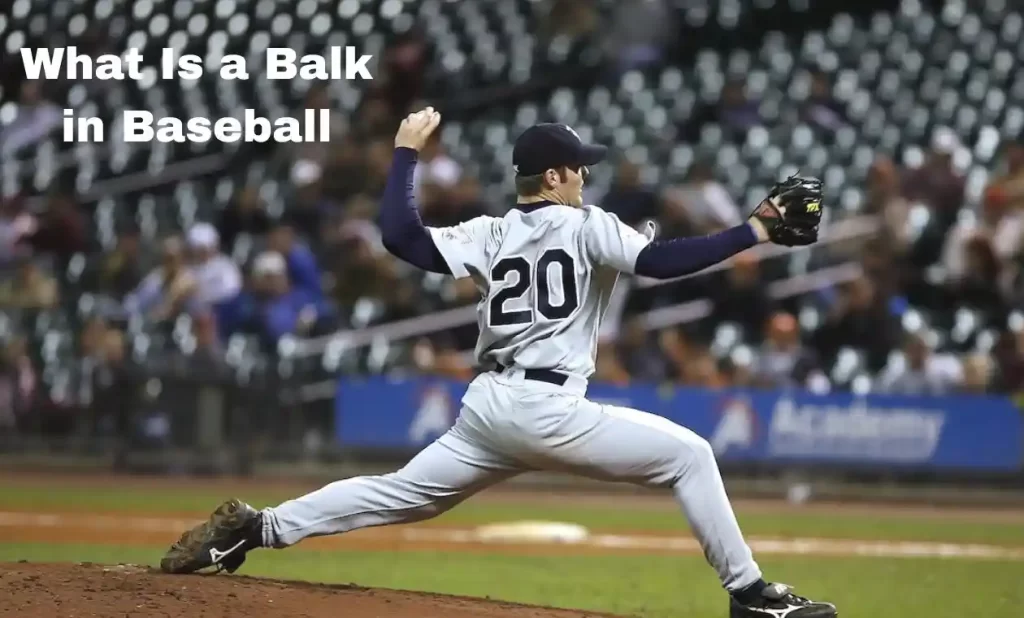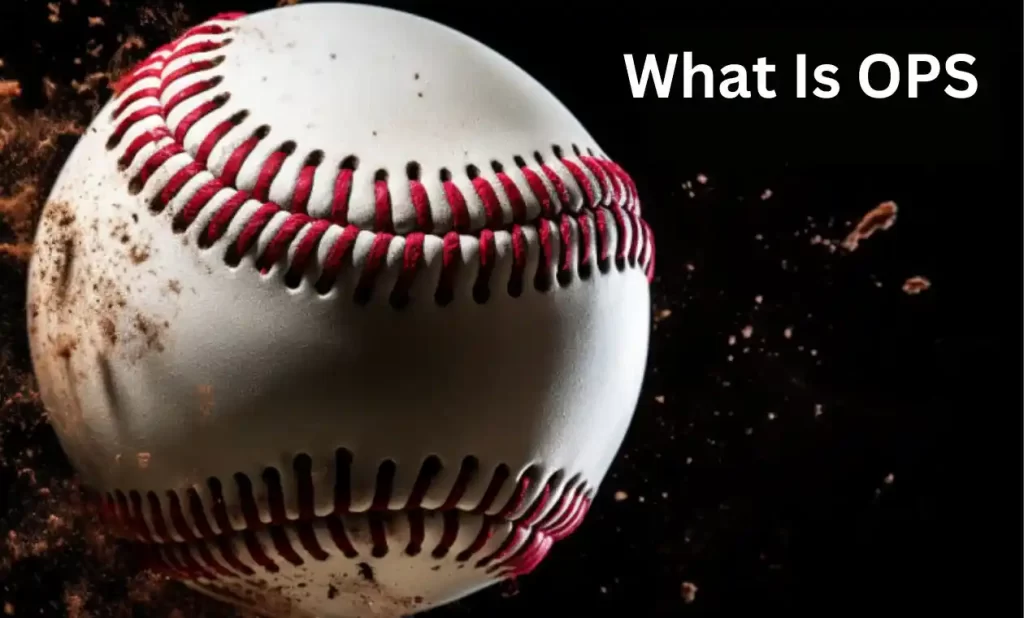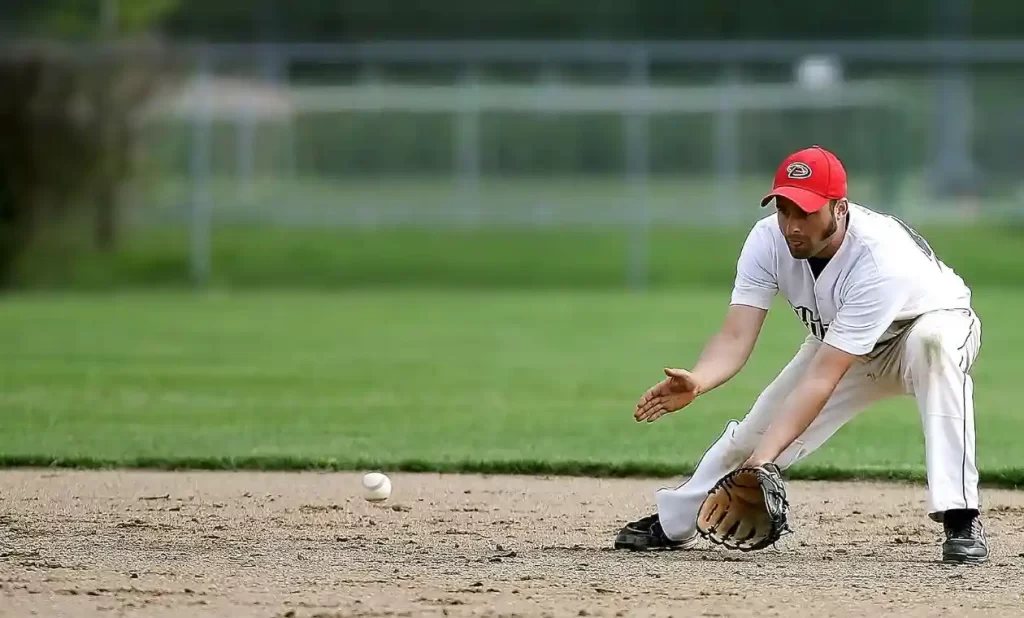What are Baseball Balks? A Comprehensive Guide

In the realm of baseball, where every move and strategy can tip the scales of victory, there’s one enigmatic term that often leaves players and fans scratching their heads: the “balk.” It’s a word that carries weight, often influencing the fate of a game. In this comprehensive guide, we’ll unravel the mysteries of a baseball balk. You’ll gain a deep understanding of what it means, its rules, and why mastering the art of avoiding balks can be a game-changer.
What Is a Balk in Baseball?
In the world of baseball, a balk is a term that can send runners scurrying and change the course of a game in an instant. But what exactly is a balk?
A Balk Defined: A balk is a pitcher’s illegal move while on the mound that results in base runners advancing to the next base. It’s a deceptive or erratic action by the pitcher that violates the rules and can have significant consequences for the defense.
The Balk’s Significance: Understanding the concept of a balk is crucial for both pitchers and fans. For pitchers, it’s about avoiding costly mistakes, and for fans, it’s about appreciating the intricacies of the game. A balk can turn the tide of an inning and impact the final score, making it an essential aspect of baseball knowledge.
As we delve deeper into this topic, we’ll explore the specific rules that govern balks and examine various scenarios where they can occur. So, stay with us as we unravel the rules and mysteries behind this intriguing baseball term.
The Rules of a Balk
Balks in baseball are not arbitrary; they follow a set of well-defined rules. To grasp the concept fully, it’s essential to understand these rules and the criteria that constitute a balk.
The Official Rules: According to the official baseball rules, a balk occurs when a pitcher makes a specific illegal movement while on the mound with runners on base. The key components of a balk move include:
- Failure to Come to a Complete Stop: When in the set position, a pitcher must come to a complete stop. Failing to do so is a common way a balk is called.
- Deceptive Pick-Off Attempts: Attempting to pick off a runner without stepping directly toward the base is another common balk scenario.
- Faking a Pitch: If a pitcher starts their pitching motion and then stops or alters it without throwing the ball, it can be deemed a balk.
Understanding these core elements is essential because they form the foundation of what constitutes a balk in baseball. As we proceed, we’ll explore real-life scenarios where these rules come into play and examine how pitchers can avoid committing a balk.
Stay tuned as we unveil more about the intricacies of balks and how they can influence the outcome of a game.
Read More: Baseball Fan Accessories
Common Balk Scenarios
Balks in baseball often occur in specific situations where pitchers find themselves in a precarious position. These scenarios can be a bit tricky to navigate, and understanding them is crucial for both players and fans.
- The Hesitating Pitcher: Imagine a pitcher who, while in the set position, hesitates and doesn’t come to a complete stop. This hesitation, even for a split second, can trigger a balk call by the umpire.
- The Deceptive Pick-Off Attempt: Picture a runner on first base, and the pitcher attempts to pick off the runner by feigning a throw but doesn’t step directly toward the base. Such a deceptive pick-off attempt can lead to a balk being called.
- The Fake Pitch: Now, envision a pitcher who starts their pitching motion, bringing their hands together, and suddenly stops without releasing the ball. This deceptive move to trick the batter or runner is a classic balk situation.
- The Fake to Third, Throw to First: In this scenario, a left-handed pitcher on the mound fakes a pick-off attempt to third base but throws to first base instead. If executed incorrectly, this can result in a balk call.
These are just a few examples of common balk scenarios. As we continue our exploration, we’ll dive deeper into each of these situations, providing clarity and insights. Plus, we’ll uncover expert tips and techniques for pitchers to avoid falling into the balk trap.
Stay tuned for a deeper dive into these scenarios and valuable advice on preventing balks in crucial game moments.
How to Avoid a Balk

For pitchers, avoiding a balk is a skill that requires precision, focus and a deep understanding of the rules. Let’s explore some expert tips and techniques to help pitchers master the art of preventing balks.
- The Complete Stop: The cornerstone of balk avoidance is coming to a complete stop in the set position. Pitchers must pause for a moment, showing no signs of movement, before delivering the pitch. This deliberate pause assures umpires and base runners of the pitcher’s intent.
- Clear and Defined Movements: Pitchers should make their movements clear and distinct. When stepping off the rubber, they must do so decisively, eliminating any doubt about their intentions. Clear and crisp motions help prevent balk calls.
- Practice Pick-Off Moves: A well-practiced pick-off move is a pitcher’s ally. By perfecting their pick-off technique and ensuring it complies with the rules, pitchers can confidently control base runners without risking balks.
- Pitching Mechanics: Proper pitching mechanics play a vital role in balk prevention. Pitchers should work on their delivery to ensure it doesn’t inadvertently trigger a balk. Coaches can help refine these mechanics.
- Mental Composure: Maintaining composure on the mound is crucial. Pitchers should stay focused, avoiding any unnecessary fakes or movements that could lead to a balk. Confidence and a calm demeanor can go a long way.
In the upcoming sections, we’ll explore more about the umpire’s perspective on balks, share anecdotes of famous balk incidents in baseball history, and address frequently asked questions (FAQs) to provide a comprehensive understanding of this intriguing aspect of the game.
Keep reading to enhance your knowledge of baseball balks and improve your game.
Read More: Best Baseball Cleats for Traction (Top Picks 2023)
The Umpire’s Perspective
When it comes to calling a balk in baseball, it’s the umpire who holds the final say. Understanding how umpires view and interpret balks is essential for players and fans alike.
The Umpire’s Role: Umpires are tasked with closely monitoring the pitcher’s movements to determine if a balk has occurred. Their keen eyes and knowledge of the rules make them the arbiters of balk calls.
Key Factors Considered by Umpires:
- Timing: Umpires watch for the pitcher’s timing, ensuring they come to a complete stop in the set position before delivering the pitch.
- Intent: Umpires assess the pitcher’s intent. Was the movement deliberate, or was it an accidental slip or flinch?
- Clarity: The clarity of the pitcher’s actions is crucial. Umpires look for clear and well-defined movements that leave no room for ambiguity.
- Runner Reaction: Umpires may also consider the reaction of base runners. If a move deceives or disrupts runners, it may be more likely to result in a balk call.
By gaining insights into how umpires view and judge balks, players can adapt their strategies and movements to stay in compliance with the rules. For fans, it’s an opportunity to appreciate the precision required in the game’s officiating.
In the upcoming sections, we’ll delve into memorable balk incidents in baseball history, explore the impact of balks on the outcome of games, and address frequently asked questions (FAQs) to provide a well-rounded understanding of this intriguing aspect of baseball.
Stay tuned to enrich your knowledge of baseball balks from different angles.
Famous Balk Incidents
Over the course of baseball’s rich history, there have been several memorable and often dramatic balk incidents that have left an indelible mark on the game. These moments showcase the significance of understanding the rules and the potential impact of a balk call.
- The World Series Balk (1996): In Game 4 of the 1996 World Series, New York Yankees pitcher Andy Pettitte committed a balk that allowed Atlanta Braves’ runners to advance. This pivotal moment shifted the momentum in favor of the Braves.
- The Mariners’ Balk-Off (2014): In an unusual and highly dramatic situation, the Seattle Mariners won a game against the Chicago White Sox in 2014 due to a balk. With the bases loaded in the 10th inning, a balk was called, forcing in the winning run.
- Maddux’s Mastery (Throughout His Career): Greg Maddux, a Hall of Fame pitcher, was known for his incredible control. His ability to avoid balks while keeping base runners in check showcased his mastery of the game.
These incidents serve as reminders of the real-world impact of balks on the outcome of games, from World Series showdowns to regular-season matchups. They emphasize the importance of mastering the rules and movements associated with balks.
As we end here, we’ll conclude the blog. Whether you’re a player, coach, or fan, this knowledge will enhance your appreciation of the game.
Read More: Baseball Jackets Trend
In Crux
In the world of baseball, where precision and strategy collide, a balk represents a critical moment that can sway the game’s outcome. We’ve embarked on a journey to unravel the complexities of a baseball balk, delving into its definition, the rules that govern it, and the scenarios where it comes into play.
From the importance of a complete stop in the set position to the art of pick-off moves, we’ve explored how pitchers can avoid this enigmatic pitfall. We’ve also gained insights into the umpire’s perspective, recognizing their role in upholding the integrity of the game.
Additionally, we’ve revisited famous balk incidents that have left their mark on baseball history, showcasing the real-world impact of balks on the grandest stages.
With a solid foundation in balk knowledge, you’re better equipped to appreciate the intricacies of the game. Whether you’re a player, coach, or devoted fan, understanding what a balk in baseball means is an essential part of your baseball journey.
As you continue your baseball endeavors, remember the significance of balks and the difference they can make in the heat of the game. Stay sharp, stay focused, and play ball!
FAQs about Baseball Balks
[sp_easyaccordion id=”599″]

Meet Daniel Anderson, the heart and soul behind Baseball Pro Picks. At 49, Daniel’s life has revolved around baseball, a passion that’s as strong today as it was when he first fell in love with the game. Living in the USA, Daniel has dedicated countless hours to watching, analyzing, and understanding every pitch, hit, and home run, making almost no game missed. His deep-rooted love for the sport is matched only by his commitment to sharing insightful, expert analysis with fellow baseball enthusiasts. With decades of experience and a keen eye for the game’s nuances, Daniel brings a unique perspective that enriches Baseball Pro Picks. Trust Daniel to guide you through the intricacies of baseball with the authority and trustworthiness of a true aficionado.












